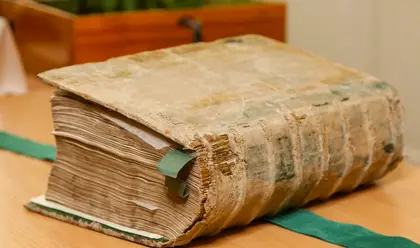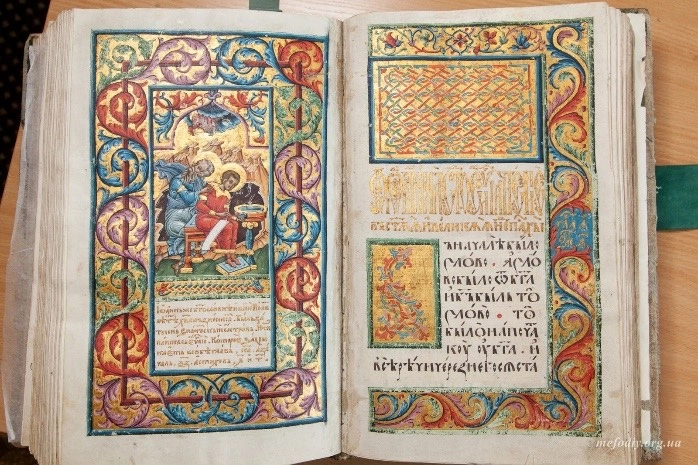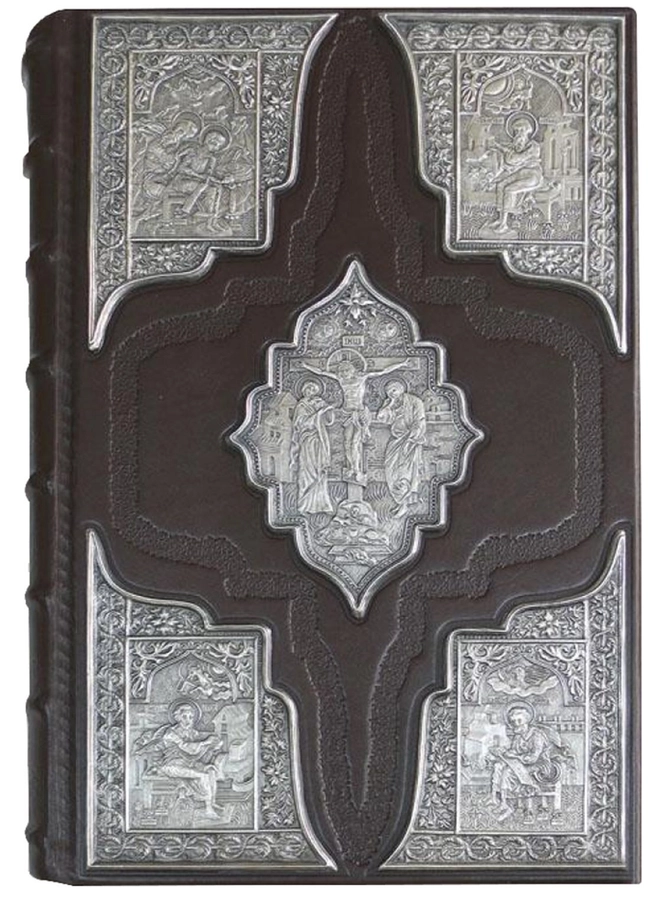National libraries in all Christian countries keep different versions of the holy scriptures that havegreatly influenced their spiritual development. The Europeans highly esteem the Codex Sinaiticus. The Baltic nations cherish the Zograph Gospel. The Ukrainians keep the Peresopnytsia Gospel with due care and reverence in acknowledgement of itscontribution to shaping Ukraine as a Christian European nation. This book, as the first translation ofthe Word of God into the living Ukrainian language, is their precious literary treasure.
In 988, Prince Volodymyr of Kyiv baptized his people, thus ushering the nascent state of Kyivan Rus into the Christian community of European peoples.
JOIN US ON TELEGRAM
Follow our coverage of the war on the @Kyivpost_official.
Christianity was fully adopted in Kyivan Rus in the mid-11th century, during the reign of Prince Yaroslav the Wise, who made his Slavic state a great power on the European continent and Kyiv a major religious and cultural center.
Yaroslav built the renowned Golden Gate and St. Sophia’s Cathedral in the capital city, as well as numerous churches throughout his realm. Establishing the tradition of a respectful attitude to books, he opened a library at St. Sophia’s Cathedral, which was replenished over subsequent decades by the best translators and scribes.
Unfortunately, the library perished when the horde of Khan Batu sacked Kyiv in 1240.
The Peresopnytsia Gospel was written in the mid-16th century in the Monastery of the Mother of God, located in Peresopnytsia, a village in the Volyn Region ofnorthwestern Ukraine.
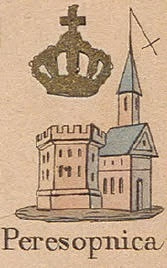
Archimandrite Hryhoriy and Mykhailo Vasylevych, the best scribe and icon painter of his time, translated the four Gospels from Old Slavic into “the living Ukrainian language for better teaching of Christians.”It took them five years (1556-1551) to translate and write – in fact paint – the text on 482 pages of highest-quality parchment. They used the most precious ofavailable materials for adorning the book, making it an exquisite work of art.
The front page of each Gospel is embellished with a miniature of the respective Evangelist and floral ornaments gleaming with gold powder that the craftsmen added to wet paint.
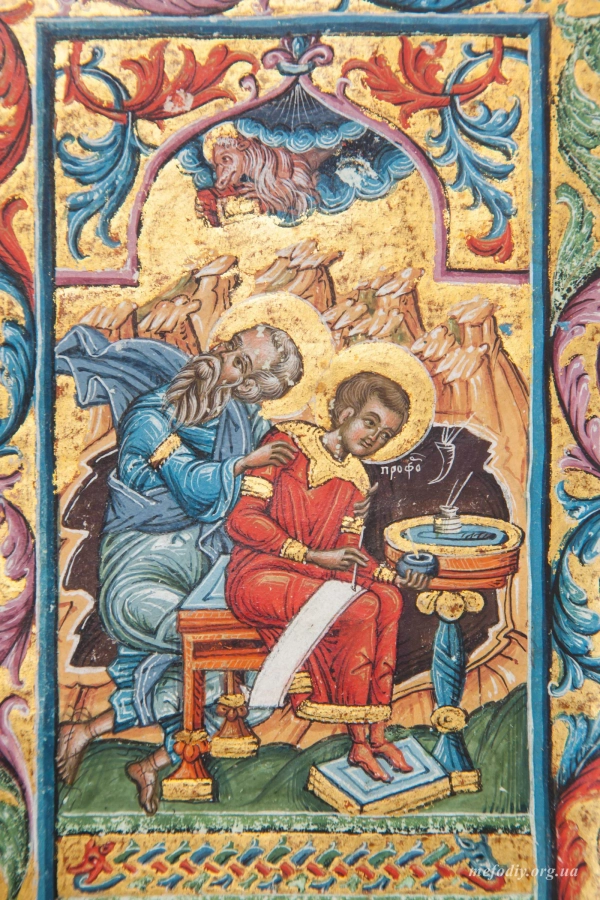
It is known that until 1600 the book was kept where it was written – in Peresopnytsia – and used for divine service. During the next three centuries, it was copied and replicated, and its cover was replaced several times. The last cover that has survived to this day was made of green velvet, but the first one was made ofleather and its corners were decorated with silvermedallions embossed with images of the Evangelists.
The 17th century witnessed the foundation of new educational establishments and the development of book printing in Ukraine. Metropolitan of Kyiv Petro Mohyla initiated excavations on the site of the 11th-century Church of the Tithes and the restoration of theKyiv Pechersk Lavra and St. Sophia’s Cathedral.
It was when several copies of the Peresopnytsia Gospel were made while the original was kept in the Cathedral of Pereyaslav, 60 miles southeast of Kyiv, where it was brought by Hetman Ivan Mazepa. He had a new cover made for the book, and his flourish is still on theflyleaf.
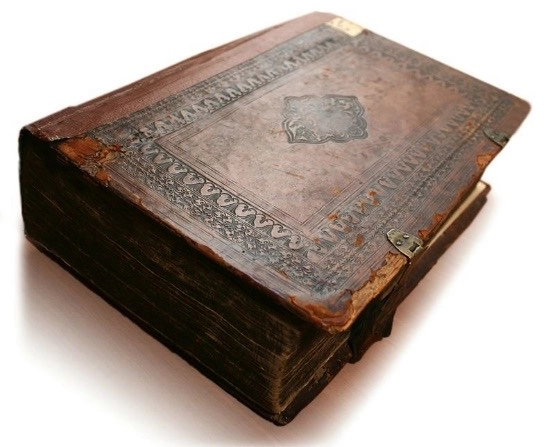
In the mid-19th century, Panteleimon Kulish translated and published the four Gospels with the aid of the British Bible Society. Kulish, a gifted Ukrainian publicist and historian, was a member of the Brotherhood of St. Cyril and St. Methodius. Theorganization united those who fully realized the significance of the Ukrainian nation’s historical heritage and actively promoted Ukrainian culture despite the enforced Russification.
One of them was the great Ukrainian poet and painter Taras Shevchenko, who reported the existence of thePeresopnytsia Gospel to the historiography board. It was thanks to Shevchenko’s notes that the whereabouts of the Peresopnytsia Gospel became known, and it was thanks to his effort that the book was transferred from the Cathedral of Pereyaslav to the Kyiv Pechersk Lavra.
In the 20th century, one of the successors to those who created the Peresopnytsia Gospel was Ivan Ohiyenko, aclergyman who devoted more than 30 years of his life to the thorough translation of biblical texts.
The original Peresopnytsia Gospel (weighing 9.3 kilograms) is now kept in the Vernadsky Library of the National Academy of Sciences. It is opened once in five years, during the presidential inauguration ceremony in the session hall of the Verkhovna Rada,where the newly elected president takes his oath of allegiance to Ukraine, holding his right hand on this sacred treasure of the nation.
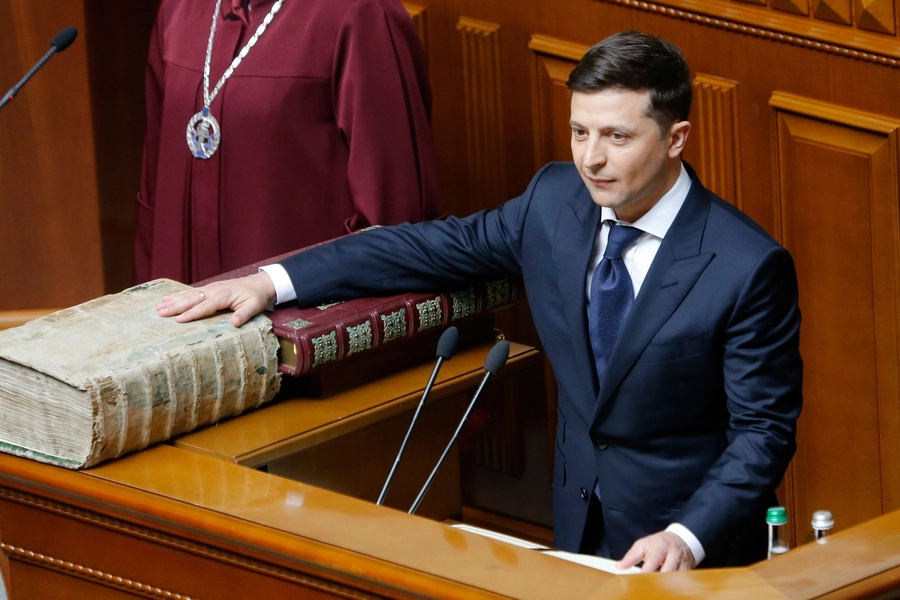
In 2018, the Orthodox Church of Ukraine and the National Academy of Sciences initiated high-quality digital reproduction of the ancient book. Hopefully, this tremendously important work will be completed soon after Ukraine defeats the Russian invaders and returns to peaceful life.
You can also highlight the text and press Ctrl + Enter


